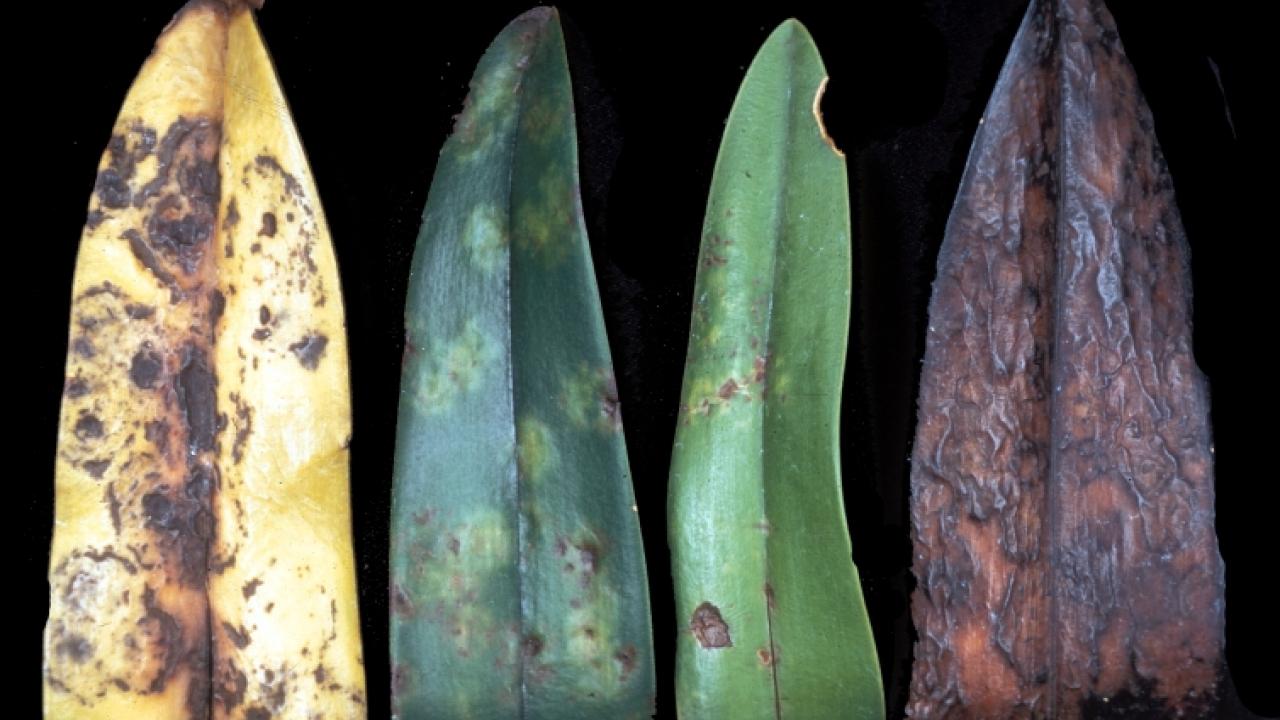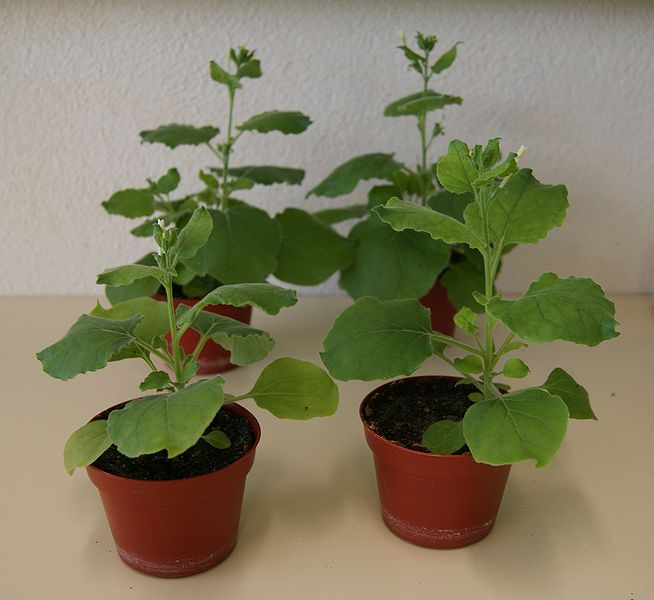
The Plant-Pathogen Arms Race: Nature Communications Study Reveals Key Player in Plant Immunity
Quick Summary
- UC Davis researchers have identified the function of a key protein that regulates plant immunity
- UBR7 is a negative regulator of plant immune responses, meaning it keeps immune receptors in check unless a pathogen invades
- The research could eventually lead to agricultural practices capable of endowing crops with broad-spectrum resistance against pathogens
The co-evolutionary arms race between plants and pathogens is one of biological balance. Plants want to defend themselves from invaders, while pathogens want to infect their hosts without killing them to propagate. Plant biologists are keen to understand the molecular battles occurring in infected plant cell territory.
“Our main thrust is to understand how plant immune receptors and their associated proteins react when a pathogen invades plant cells,” said Professor Savithramma Dinesh-Kumar, Department of Plant Biology and The Genome Center. “The first set of plant nucleotide-binding leucine-rich repeat (NLR) class of immune receptors were cloned almost 25 years ago, but we still don’t understand how these receptors are functioning.”
In a study appearing in Nature Communications, Dinesh-Kumar and his colleagues from Iowa State University, China Agricultural University, Stanford University and Massachusetts Institute of Technology identified the function of a key protein that regulates plant immunity. The fundamental research could eventually lead to agricultural practices capable of endowing crops with broad-spectrum resistance against pathogens.
“How do we engineer these receptors to recognize multiple pathogens?” said Dinesh-Kumar. “Or how can we engineer the downstream signaling steps to activate responses to multiple pathogens?”
ID’ing plant cell destruction
Using Nicotiana benthamiana, a tobacco plant, as a model system, Dinesh-Kumar and colleagues employed a proximity labeling technique called TurboID to identify proteins that interact with an NLR immune receptor called N. NLR receptors are critical to both plant and animal pathogen defense. The proximity labeling technique allowed Dinesh-Kumar and colleagues to identify the network of proteins that could work in concert to regulate NLR-mediated immune response.

In the study, the team focused on the N NLR immune receptor. This receptor provides resistance to the tobacco mosaic virus, which can infect crops like tomatoes, peppers, potatoes and other important Solanaceae crops.
“Using this method, we identified interesting players, but then in order to probe further, we focused on one protein which seemed to be involved in selective protein degradation process in the cell,” said Dinesh-Kumar.
That protein is an UBR-box containing ubiquitin protein ligase E3 component N-recognin 7, otherwise known as UBR7.
“This protein UBR7 is highly conserved from plants to animals, but we know very little about this ligase’s function in any system,” said Dinesh-Kumar.
The researchers’ experiments revealed that UBR7 plays a key role in negative regulation of N NLR levels. Basically, UBR7 keeps the NLR immune receptor levels in check unless the cell detects an invading pathogen. “The reason we focused on that is that we don’t know too much about negative regulators of immunity in plants,” said Dinesh-Kumar, noting that research often focuses on positive regulators.
Dinesh-Kumar said the presence of UBR7 might prevent NLR receptors from auto-activating and hence inducing autoimmunity.
“If you induce autoimmunity (without the presence of a pathogen), it is not good for the plant because the cells will die and growth will be affected,” he said. “But when the pathogen comes, this protein is disassociated from the receptor so the receptor can then activate immune response to contain the pathogen to the infection site.”
Dinesh-Kumar noted that while their study was under review, other research showed that a related protein called UBR2 was shown to activate immune receptors in humans in response to anthrax toxins.
Turbo-charging research methods
According to Dinesh-Kumar, the research provides the first evidence of the roles the UBR family of proteins play in plant immunity. “For us, the highlight here is the biology,” said Dinesh-Kumar. “The biology of how immune receptors function and recognize pathogens.”
While the highlight is the biology, the methodology Dinesh-Kumar and his colleagues used is also important. The TurboID method, the research team reports, was more efficient than other proximal labeling methods like BioID and BioID2 in plants.
“We hope that the methods we describe and the approach we describe will be useful for others who want to use this in plant biology research,” said Dinesh-Kumar.
Yongliang Zhang, Ugrappa Nagalakshmi, Neeraj Lal, Wenjie Zheng, Pin-jui Huang and Yuanyuan Li from UC Davis; Gaoyuan Song and Justin Walley from Iowa State University; and Tess Branon and Alice Ting from Stanford University and Massachusetts Institute of Technology were involved in the study.
The work was supported by the National Science Foundation, National Institutes of Health, China Scholarship Council and National Natural Science Foundation of China.
